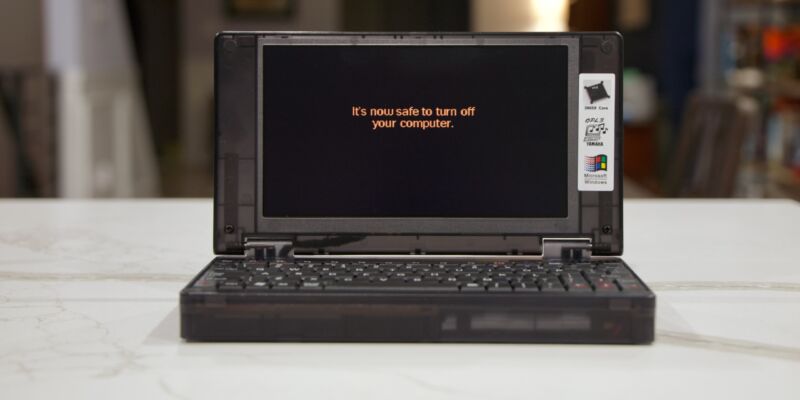
Enlarge / The Pocket 386 is fun for a while, but the shortcomings and the broken stuff start to wear on you after a while. (credit: Andrew Cunningham)
The Book 8088 was a neat experiment, but as a clone of the original IBM PC, it was pretty limited in what it could do. Early MS-DOS apps and games worked fine, and the very first Windows versions ran… technically. Just not the later ones that could actually run Windows software.
The Pocket 386 laptop is a lot like the Book 8088, but fast-forwarded to the next huge evolution in the PC’s development. Intel’s 80386 processors not only jumped from 16-bit operation to 32-bit, but they implemented different memory modes that could take advantage of many megabytes of memory while maintaining compatibility with apps that only recognized the first 640KB.
Expanded software compatibility makes this one more appealing to retro-computing enthusiasts since (like a vintage 386) it will do just about everything an 8088 can do, with the added benefit of a whole lot more speed and much better compatibility with seminal versions of Windows. It’s much more convenient to have all this hardware squeezed into a little laptop than in a big, clunky vintage desktop with slowly dying capacitors in it.